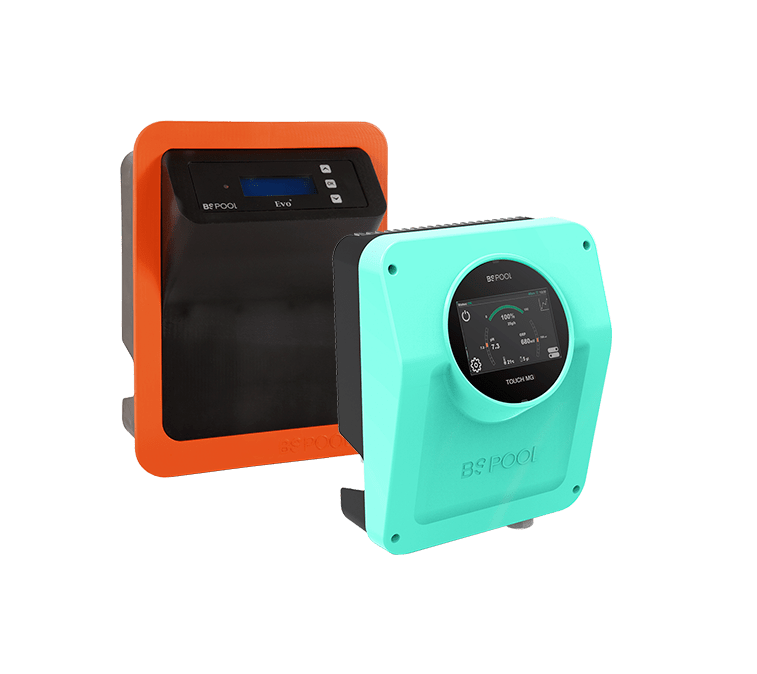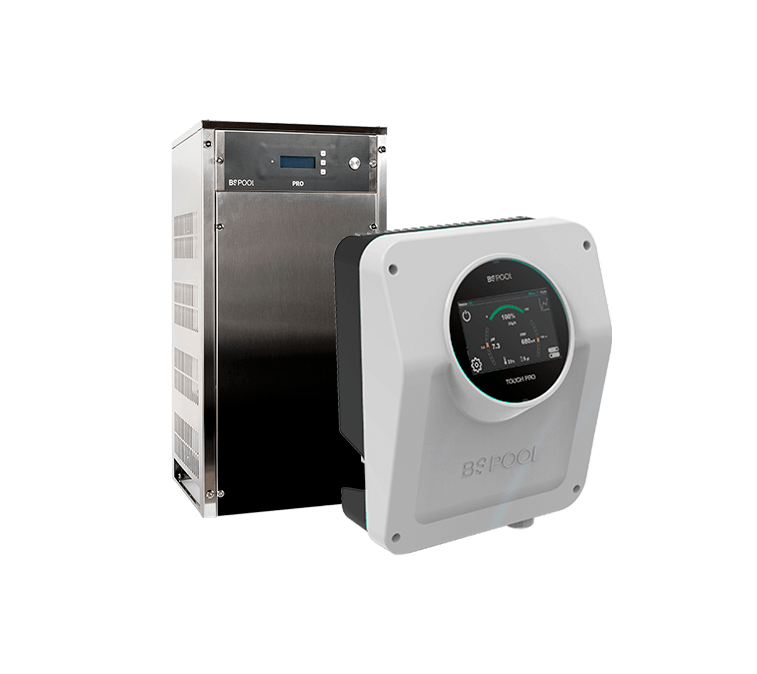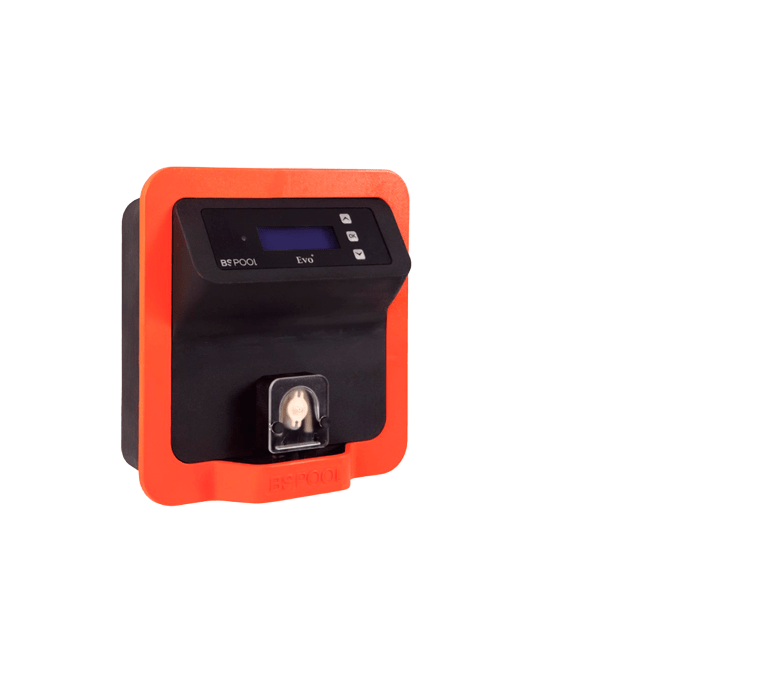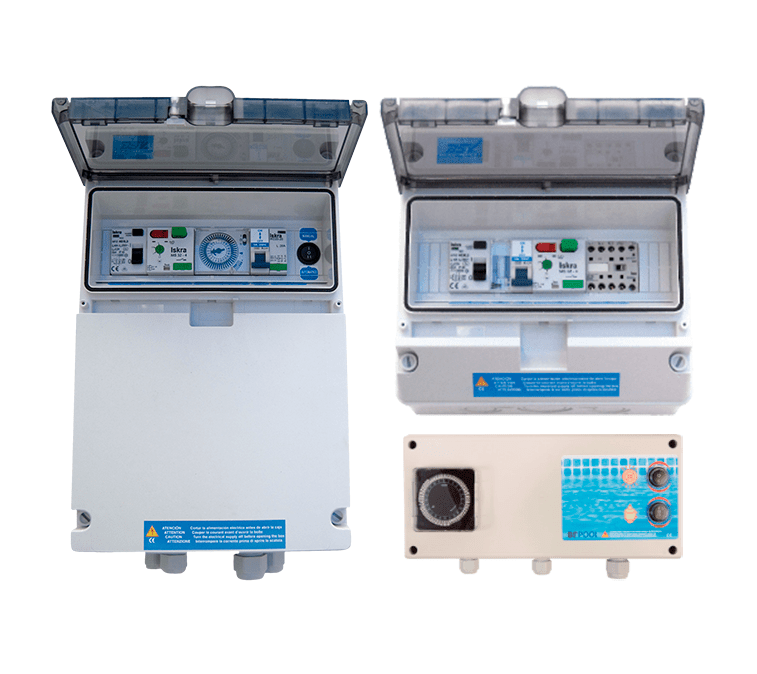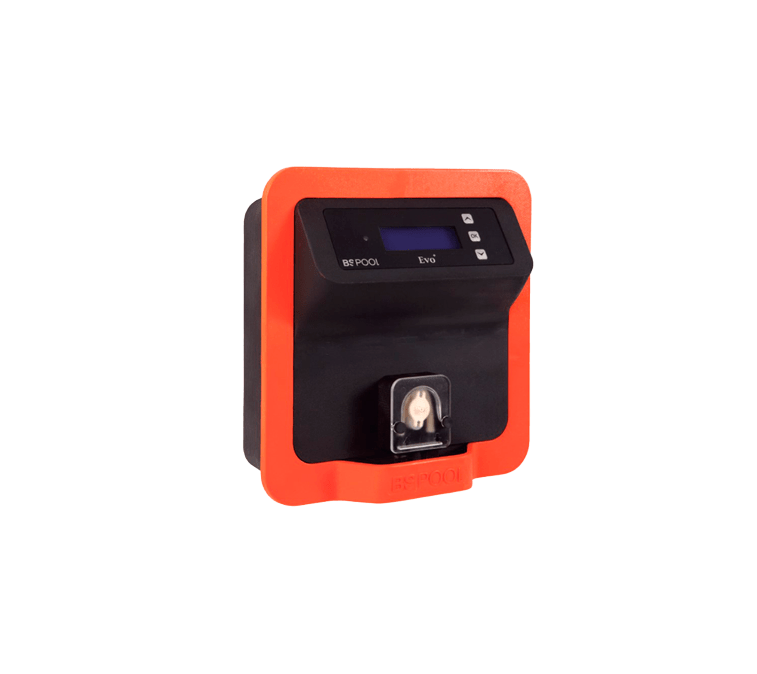SATS' Map
Find the SAT
closest to you
Contact by Skype
Office hours
Monday to Thursday from 8-13:30h and from 15-18h
Fridays from 7-15h
Contact by Skype
National Skype
International Skype
Office hours
Monday to Thursday from 8-13:30h and from 15-18h
Fridays from 7-15h
Chlorination equipment manuals
FAQs
Find the answers to the main FAQ about the equipment.
To the excessive presence of metal ions, which are colored when adding the disinfectant. The pH must be controlled, adjusting it between 7,2 and 7,8. Do a super chlorination and brush the walls and bottom of the pool.
To the excessive presence of chlorine combined, meaning, chloramines and organic matter. The pH must be adjusted between 7,2 and 7,8, measure the free chlorine (DPD method) and do a shock chlorination.
No, it doesn’t lose chlorine. If the filter is dirty, meaning that it has a high content of organic matter, it will decrease the amount of chlorine going through the filter as chlorine reacts with organic matter that is in the filter.
Free chlorine (DPD method) and the pH must be controlled in order to see if the number values are the ones established by the legislation. They must be corrected if they are different to the established.
To a hard water and a high pH, with which the lime becomes visible and precipitated. Flocculation must be done. The filter is stopped and pool solids are allowed to settle. After 24 hours the in-floor cleaner is used. The pH must be adjusted between 7,2 and 7,8 and continue with the regular treatment.
The amount of algicide is insufficient and/or the quantity of nutrients (phosphates) that facilitate algae wroth can be excessive. The filter must be cleaned counterflow and brushing eliminate the algae, following this you must adjust the pH and do a shock treatment. Flocculant must be added and let it filter for two days. Following this, a double quantity of algicide will be added.
Alkalinity higher than 225mg/l will difficult the pH’s stability and will produce corrosion in the installations. The water will turn green which will cause irritations in the eyes. To solve this, you’ll have to add hydrochloric acid or sodium bisulfite.
Alkalinity lower than 75 mg/l will difficult the pH’s stability. It is produced by the characteristics of the supply or filling water and by the additions of chemical products. To solve this problem you’ll have to add sodium bicarbonate or sodium carbonate to the pool water.
Problem solutions
Find out how to solve all your problems with the equipments in the most practical way.
Check the salt levels and add, if necessary. The salt recommended for private pools is 4 g/l and for commercial public pools is 5 g/l.
Check that there are no calcareous incrustations, if so, clean the cell.
Check the functioning hours. If it exceeds the ¾ parts of its useful life, you should consider replacing it.
There’s too much salt in the water. It doesn’t affect its functioning nor the useful life of the cell.
The equipment has been put into cleaning mode to optimize the cell. There’s no need to do anything. When the cycle is finished, it’ll go back to its established normal functionality.
The equipment has excess temperature inside. When the temperature drops, it will automatically go back to its normal functionality. Try to place the equipment in vented areas or with air flow.
The water’s temperature value is below 15º. If you want, you can stop the equipment and use a hibernation method so the cell doesn’t wear out.
This can be because there’s no water flow through the vessel or due to excess of gas in the electrolytic cell. It may be caused by the pump being stopped. Check the installation.
It can also be related to the white wire not being correctly placed both in the cell and in the equipment. It can also be because the sensor has incrustrations. For this, clean the cell and check again.
If the cell is exhausted, it can also give this alarm. Check that it hasn’t run out of useful life.
Check that the “FLOW SWITCH” function isn’t activated in the settings menu.
Check that the cell is connected correctly both on the inside of the equipment and in the cell.
Also, check that there’s both water circulation and the recommended salt concentration (4 gr/l).
It may also be the case that the cell runs out. Check that it hasn’t reached the end of its useful life.
It may be caused by a bad connection of the cell or because it has a metal body inside. Extreme calcification can also cause a short circuit.
This alarm is due to the fact that the Redox value hasn’t moved for 2 hours. The equipment interprets there’s a problem with the probe, that it’s no connected correctly or it has run out. It could also be that there is a problem in the water. In this case, the values that are incorrect must be analyzed and corrected.
This alarm is due to the fact that the pH value hasn’t moved for 2 hours. The equipment interprets this as a problem with the probe, that it’s not connected correctly or it has run out. It could also be that the acid drum is empty. This alarm will reset itself pressing OK.














